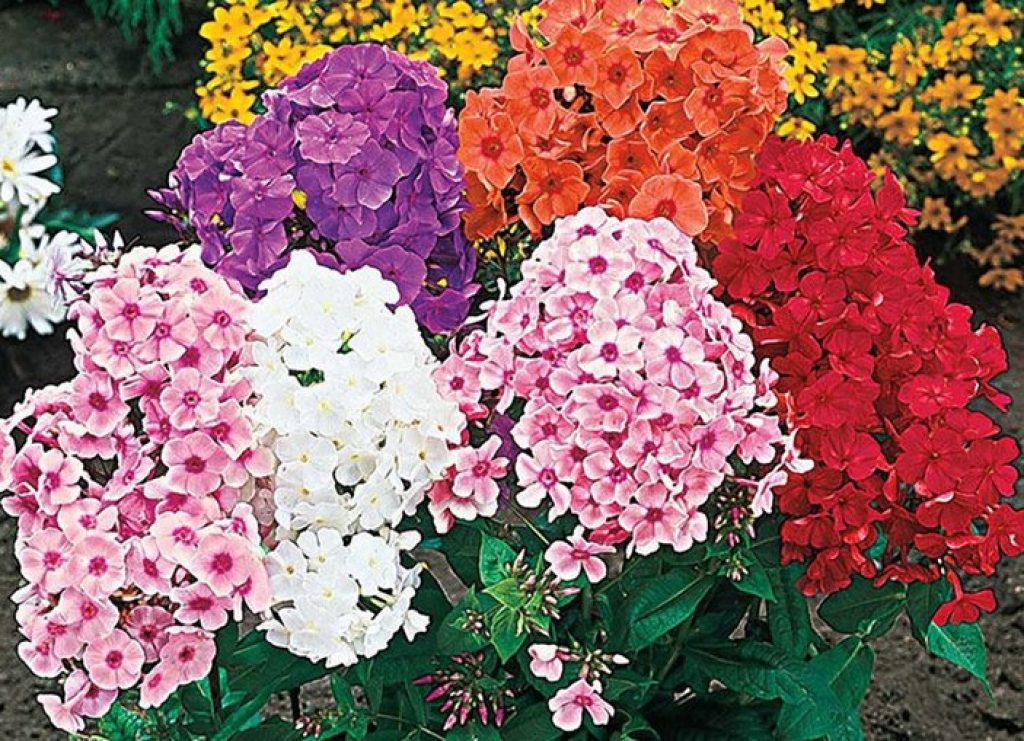The showy pink, red, lavender, purple, rose, white, and those that are bicolored (with contrasting margins or eye in the center) makes phlox breathe-taking and one of the favorites in most American gardens. They are easy to grow, hardy, and long-lived. Do rabbits eat phloxes or not?
Phlox is a genus name for about 67 flowering annual and perennial plants belong to the Jacob’s-ladder or phlox family, Polemoniaceae. They are native to diverse habitats in North American (alpine tundra, prairie, and woodlands), with one type found in Siberia.

Phloxes have different blooming times (some in spring and others in summer). Most have some fragrant, with notable ones being P. subulata (pink moss mountain, moss, moss pink, or creeping phlox) and P. paniculata that grow upright. There is also the woodland species.
To answer your question, groundhogs, deer, and rabbits eat phlox, including woodland, garden, and creeping phlox. They are one of their popular foods, and the Iowa State University Extension and Outreach has phlox as one of the plants susceptible to rabbit damage (moderate to severe damage)
Phlox joins other ornamental flowers like impatiens, morning glory, nasturtium, pansies, bachelor’s button, roses, hostas, and coneflowers that attract bunnies.
Therefore, you must protect your phlox from rabbits, groundhogs, and deer. To keep away jackrabbits, cottontails, hares, or wild rabbits, implement one of the following:
- Garden fencing – Fence around your ornamentals using a 1/2- to 1-inch chicken wire mesh. It should be at least 2 feet high and buried at least 6 inches deep to discourage diggers and jumpers.
- Modify your habitat – If you have any bushes, tall grasses, debris piles, or rabbit warrens, consider cleaning all these as they give them perfect hiding places.
- Repellents and deterrents – There are dozens of good rabbit repellents and deterrents that will discourage rabbits from eating your phlox or scare them off.
- Other ways – They include having a predator, shooting, and trapping, or using homemade repellents.
Besides rabbits, larvae of Lepidoptera species like Gazoryctra wielgusi, hummingbird hawk-moth, Schinia indiana (eats only P. pilosa), and dot moth will feed on the phlox foliage.
More on phlox
While we have considered them as annuals and perennials, for the cultivated varieties, only the P. drummondii, is an annual.
Secondly, creeping phlox, which spreads rapidly, makes a good ground cover for areas under trees or river banks that blooms in winter just as the woodland phlox does. On the other hand, the upright growing garden phlox bloom during summers.
The exact conditions depend on where the specific cultivars originated from, with those from alpine requiring full sun and good drainage, the woodland needs partial sun and humus soil. On the other hand, those from waterside will thrive in soils with moisture and full sun.
Finally, some of the phlox species and varieties include garden phlox like Flame White Eye, Nicky, Peppermint Twist, Franz Schubert, Eva Cullum, David, Candy Twist, Bright Eyes, or Blue Paradise, as well as creeping and woodland. If you want woodland, a good option would be P. divaricate, while for creeping phlox, consider Candy Stripe, Emerald Cushion Blue, Emerald Pink, and Purple Beauty.
Conclusion
Phlox are easy to propagate even with stem cutting. They attract butterflies, some species are good ground covers, and their flowers are incredibly charming, making them great ornamental plants. Let not the fear of rabbits eating them discourage you. You can control them.
